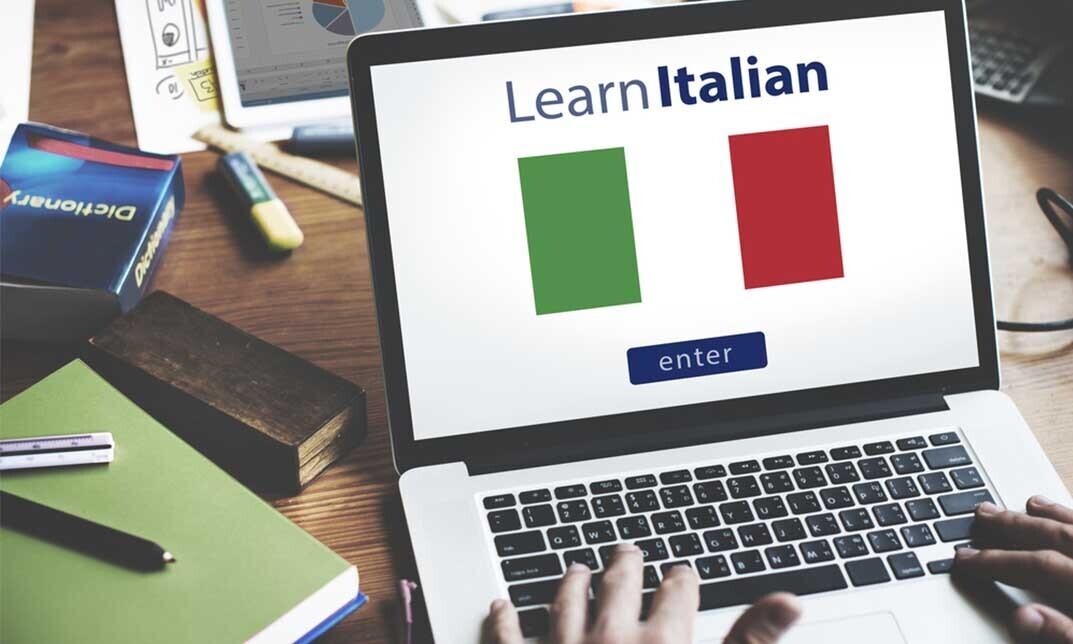Just as I did with the article on Italian verbs, I think it's important first to refresh our knowledge of what exactly prepositions and pronouns are in the English language.
So, what are prepositions and pronouns?
Prepositions are words which relate a noun or pronoun (called the object of the preposition) to another word in the sentence. The preposition and the object of the preposition together with any modifiers of the object is known as a prepositional phrase.
Must-Watch Italian Movies and TV Shows to Improve Your Italian
Pronouns are an essential part of any language, used to indicate or replace the person, animal or thing that is either doing or receiving an action. Pronouns are basically how we identify ourselves apart from our names. It's how someone refers to you in conversation
A preposition is a word or group of words used before a noun, pronoun, or noun phrase to show direction, time, place, location etc...
Now that we're all caught up and are more aware of where we stand when it comes to using prepositions and pronouns in the English language it should make things a little easier when it comes to recognising them in a foreign language.
The Italians have their priorities right: They're driven, they do their work, but they really enjoy the day-to-day and they don't put off the enjoyment of the everyday for some future goal.
Frances Mayes

How do you use prepositions in Italian?

Did you know that Italian verbs can be categorized into three types?
When an article does not follow them, Italian prepositions are called “simple prepositions”. There are nine of them: di, a, da, in, con, su, per, tra, fra.
The preposition a is often equivalent of the English “in,” “to” or “at”. When a is combined with the definite articles, it looks like this:
| + il | + lo | + la | + l’ | + i | + gli | + le | |
| a | al | allo | alla | all’ | ai | agli | alle |
Prepositions are used in front of nouns and pronouns to show the relationship between the noun or pronoun and the rest of the sentence.
Andiamo a Roma. We’re going to Rome.
Important Differences Between Prepositions in English and Italian
In English, you can use a preposition at the end of a question (for instance: who did you come with?) but you can’t do so in Italian. Italian prepositions are always placed in front of another word and never at the end of a question or at the end of a sentence.
NOTE: Italian prepositions are one of those grammar topics which will require a lot more practice.
Don’t try to master them in a single day as they’ll probably only get you frustrated. Instead, listen to the use of prepositions by native speakers in podcasts or movies!

When it comes to greeting new people, Italians shake hands and exchange three kisses on the cheeks!
A Quick Guide to Italian Pronouns
Pronouns are an essential part of any language, used to indicate or replace the person, animal or thing that is either doing or receiving an action.
Italian pronouns are mainly divided into:
- Italian subject pronouns
- Italian object pronouns (direct and indirect)
- Italian possessive pronouns
- Italian relative pronouns
- Italian reflexive pronouns
If you feel confused by all these categories, you’re not alone but don't worry it takes people a long time to come to grips with just how to use pronouns correctly in the Italian language.
Basic (Subject) Pronouns:
Italian subject pronouns are the equivalent of the English I, you, he, she, etc...
| Italian | English |
| Io | I |
| Tu | You |
| Lui (egli) | He |
| Lei (ella) | She |
| Esso/essa | It |
| Noi | We |
| Voi | You |
| Loro (essi) | They |
The third-person pronoun are lui (or egli), lei (or ella), esso and essa (it), loro (or essi). Lui, lei and loro are commonly used in spoken language, while egli, ella and essi are used almost only in literature. Esso and essa are seldom used, with the exception of some regional uses.
There are two kinds or object pronouns: direct and indirect.
Direct pronouns:
| Italian | |
| Mi | Me |
| Ti | You |
| Lo | Him/It |
| La | Her/It |
| Ci | Us |
| Vi | You |
| Li, le | Them |
Direct pronouns are used to indicate the direct recipient of the action of a verb, and they replace object nouns. This means that, instead of using a noun in a sentence (be it a place, a person or a thing) you use the appropriate pronoun. For example:
- Marco mangia la pasta -> Marco la mangia.
Marco eats pasta -> Marco eats it.
Indirect object pronouns:
| Italian | English |
| Mi | Me |
| Ti | You |
| Gli | Him/It |
| Le | Her/It |
| Ci | Us |
| Vi | You |
| Loro/Gli | Them |
Unlike direct pronouns, who answer the questions “who?”, “what?”, indirect pronouns answer the questions “to whom?”, “to what?”. They are used to replace the object in those cases where the verb is followed by the preposition “a”.
- Ho mandato un sms a Lucia -> Le ho mandato un sms.
I’ve sent a sms to Lucia -> I’ve sent her an sms.

From "hello" to "goodbye" and everything in between, here are the basic Italian words and common Italian phrases for travellers heading to Italy.
Get help Mastering Prepositions and Pronouns
Italian pronouns are tiny little blocks that you need to master if you want to convey the right meaning and sound more natural as you speak. If you’re not sure whether you’re able to use them correctly, fear not!
One of the main reasons people like to study languages with a tutor is because after meeting with you they will have a clear strategy for you to reach your language learning goals and will be there to support you every step of the way.
Most of the tutors at Superprof offer you the option to take in-home or online lessons. This means you can learn whichever way is more comfortable for you, in your own space, at your own pace and at whatever time suits you. Lessons start from just €15 per session and you can take as many as few as you want.















